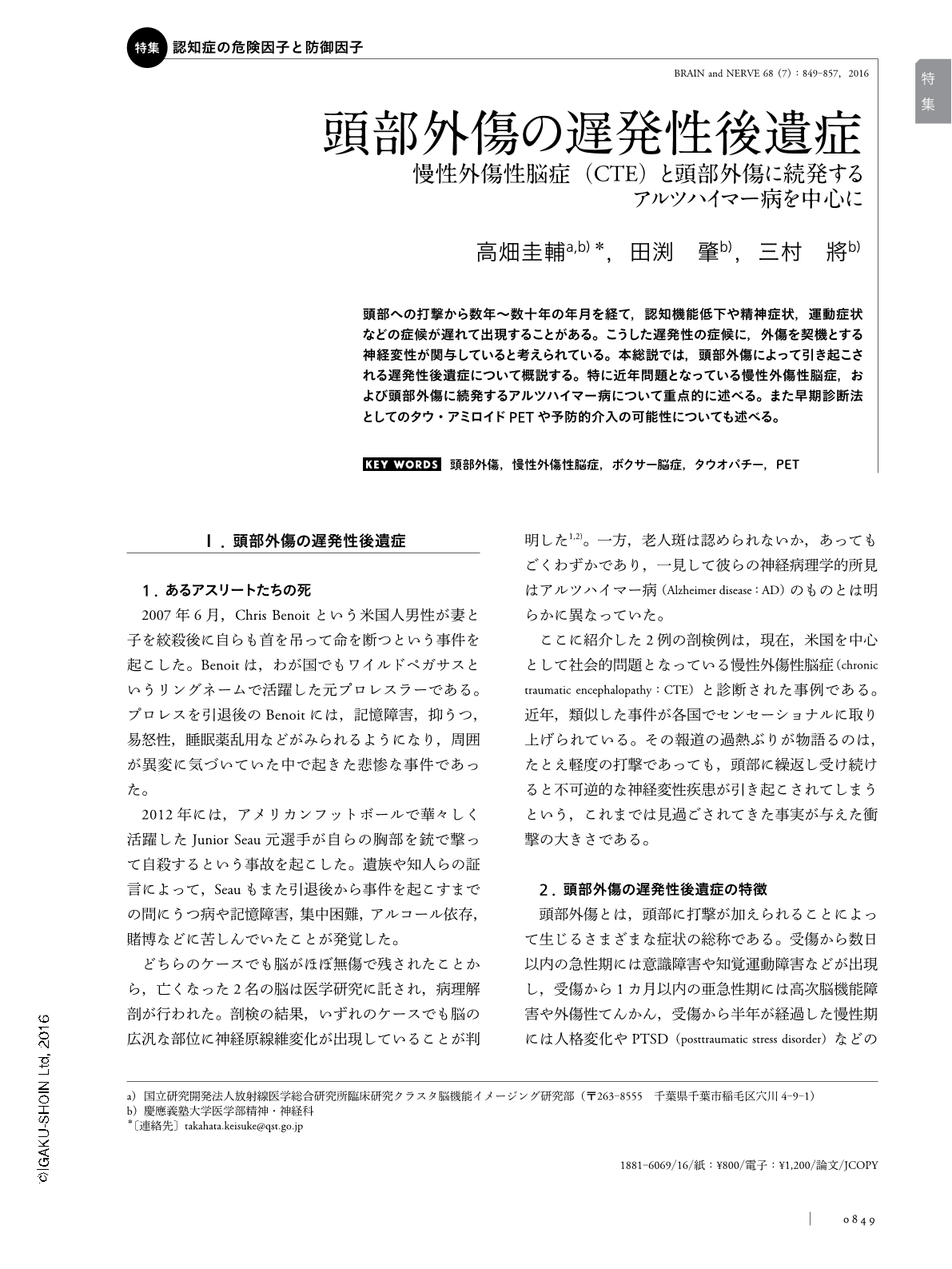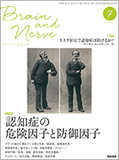Japanese
English
- 有料閲覧
- Abstract 文献概要
- 1ページ目 Look Inside
- 参考文献 Reference
頭部への打撃から数年〜数十年の年月を経て,認知機能低下や精神症状,運動症状などの症候が遅れて出現することがある。こうした遅発性の症候に,外傷を契機とする神経変性が関与していると考えられている。本総説では,頭部外傷によって引き起こされる遅発性後遺症について概説する。特に近年問題となっている慢性外傷性脳症,および頭部外傷に続発するアルツハイマー病について重点的に述べる。また早期診断法としてのタウ・アミロイドPETや予防的介入の可能性についても述べる。
Abstract
Chronic traumatic encephalopathy (CTE) is a neurodegenerative disease, which is associated with mild repetitive traumatic brain injury (TBI). This long-term and progressive symptom due to TBI was initially called punch-drunk syndrome or dementia pugilistica, since it was believed to be associated with boxing. However, serial neuropathological studies of mild repetitive TBI in the last decade have revealed that CTE occurs not only in boxers but also in a wider population including American football players, wrestlers, and military personnel. CTE has gained large public interest owing to dramatic cases involving retired professional athletes wherein serious behavioral problems and tragic incidents were reported. Unlike mild repetitive TBI, a single episode of severe TBI can cause another type of late-onset neuropsychiatric disease including Alzheimer's disease (AD). Several epidemiological studies have shown that a single episode of severe TBI is one of the major risk factors of AD. Pathologically, both AD and CTE are characterized by abnormal accumulations of hyperphosphorylated tau proteins. However, recent neuropathological studies revealed that CTE demonstrates a unique pattern of tau pathology in neurons and astrocytes, and accumulation of other misfolded proteins such as TDP-43. Currently, no reliable biomarkers of late-onset neurodegenerative diseases following TBI are available, and a definitive diagnosis can be made only via postmortem neuropathological examination. Development in neuroimaging techniques such as tau and amyloid positron emission tomography imaging might not only enable early diagnosis of CTE, but also contribute to the interventions for prevention of late-onset neurodegenerative diseases following TBI. Further studies are necessary to elucidate the mechanisms of neurodegeneration in the living brain of patients with TBI.

Copyright © 2016, Igaku-Shoin Ltd. All rights reserved.


